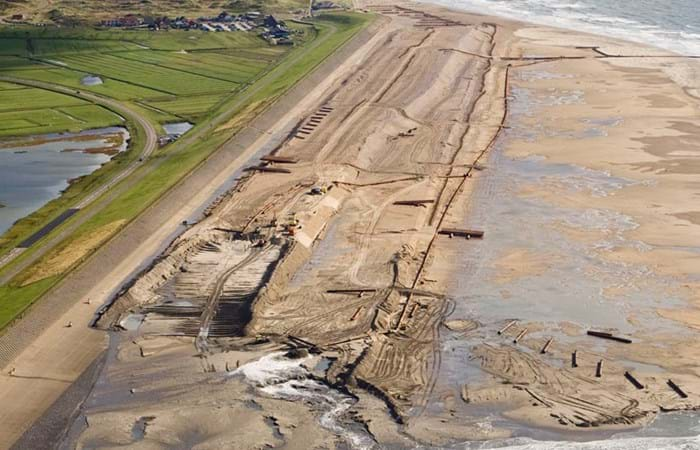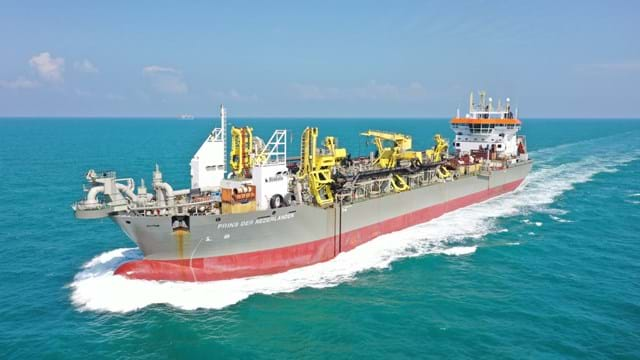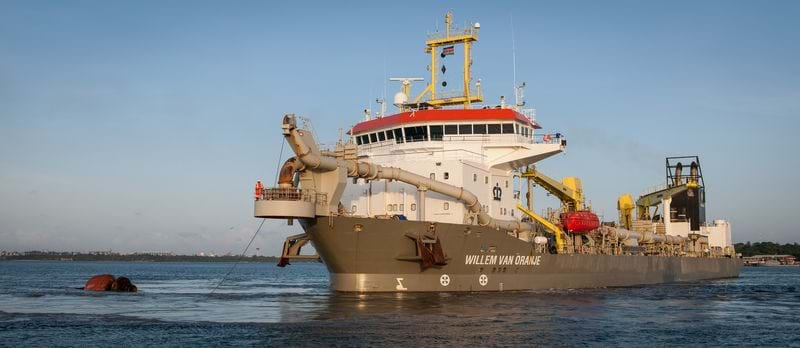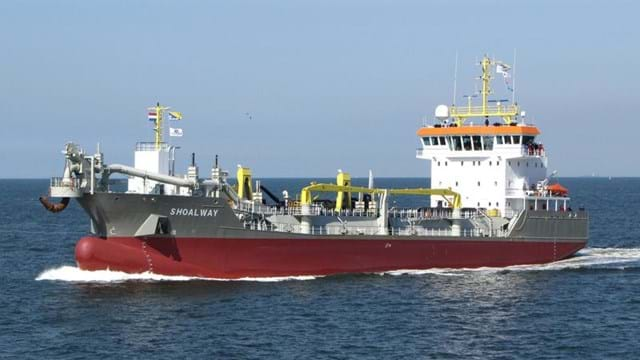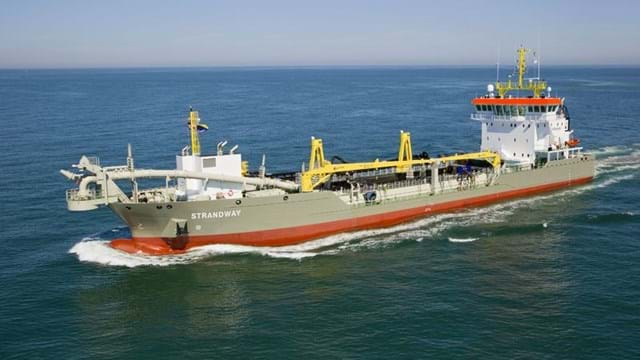A joint venture of Boskalis Nederland and Van Oord has been commissioned by the Hollands Noorderkwartier water control board to reinforce the Hondsbossche and Pettemer Sea Defense between the villages of Petten and Camperduin on the coast of the Dutch province of Noord-Holland.
Because the Hondsbossche and Pettemer Sea Defense no longer meets safety standards Boskalis is to replenish the coastline using sand. A daring design has been made in which safety is paramount but added value for the environment is also an important aspect: not just safe but also attractive and offering something for everyone. The middle section will provide space for nature while at either end, near the villages of Camperduin and Petten, the focus is on added value for recreation.
The contract
A joint venture of Boskalis Nederland and Van Oord has won a contract from the Hollands Noorderkwartier water control board to reinforce the Hondsbossche and Pettemer Sea Defense between the villages of Petten and Camperduin. The client had stipulated 'a safe design using sand with added value for nature and recreation'. Boskalis won the contract on the strength of its unique design ideas. The contract comprises the construction of the new sandy coastline and its maintenance for the next 20 years. The commissioning body for the maintenance part of the contract is the Dutch department of public works. The project, part of the second national Flood Protection Program, involves creating beaches and dunes through sand replenishment.
Work
This weak link in the sea defense will be strengthened using 35 million m3 of sand from the sea, to be supplied by five trailing suction hopper dredgers: three for foreshore replenishment and two for beach replenishment. Coordination between the two large vessels has been arranged in such a way that they can unload simultaneously; the fact that the vessels do not have to wait for one another means lower fuel consumption and therefore lower carbon emissions. Replenishment of the foreshore has been going on since March 2014, with large quantities of sand having been dumped and rainbowed just off the coast. Beach replenishment work started in July and involves pumping the sand for the new beach and dunes through a 1.5 kilometers long underwater pipe. To prevent drifting the new dune will be planted with beach grass and will feature dips in the lee of the wind to allow drift sand to settle on the dune. Conversely, where drifting is desirable we are doing our best to allow for this as well.
Planning schedule
The design was announced in December 2013 and execution of the project started in early 2014. The safety of our coastline must be back up to standard by 31 December 2015. After the sand is in place the joint venture will still be busy in early 2016 realizing cycle tracks, footpaths and bridleways, and creating beach access points as well as several unique features such as the panoramic dune and the beach lagoon. After completion the joint venture of Van Oord and Boskalis Nederland will be responsible for the maintenance for a period of 20 years.
